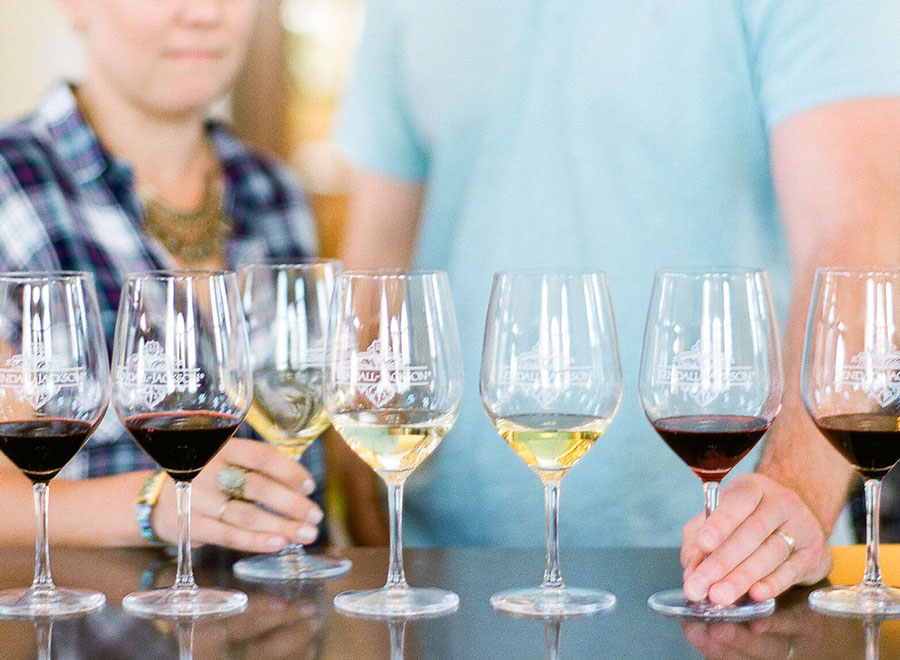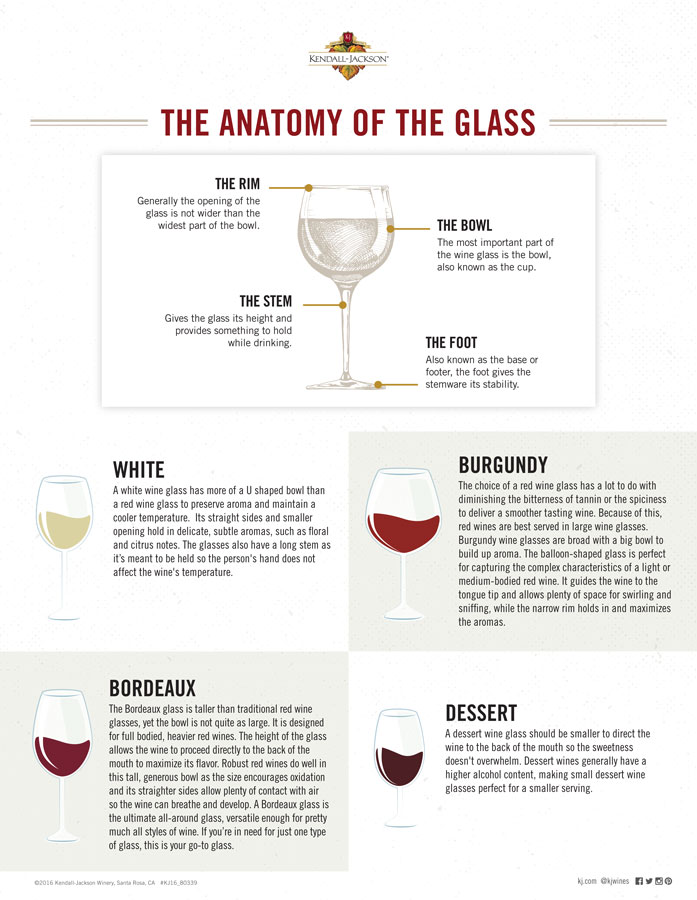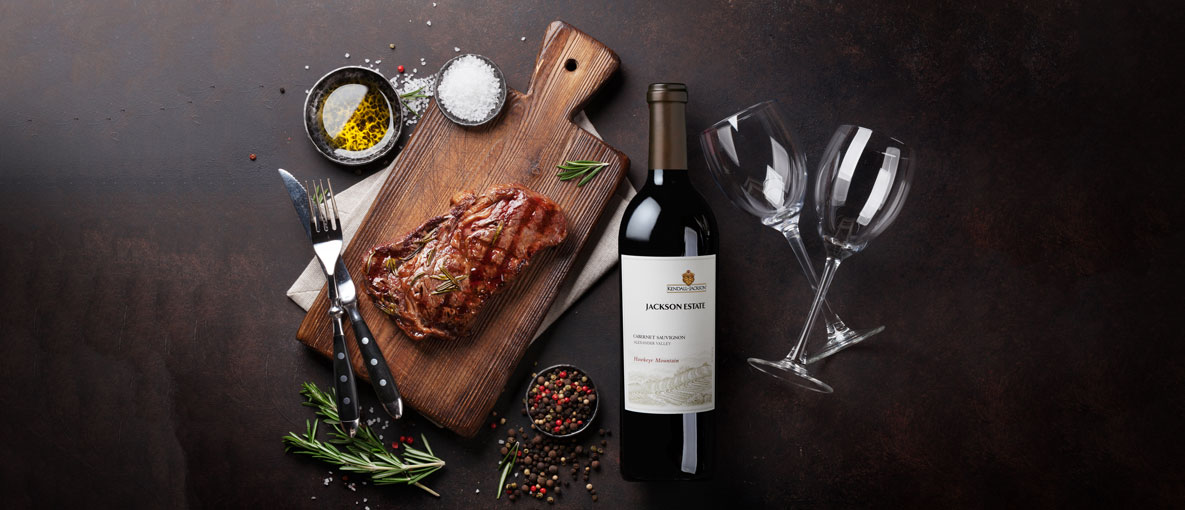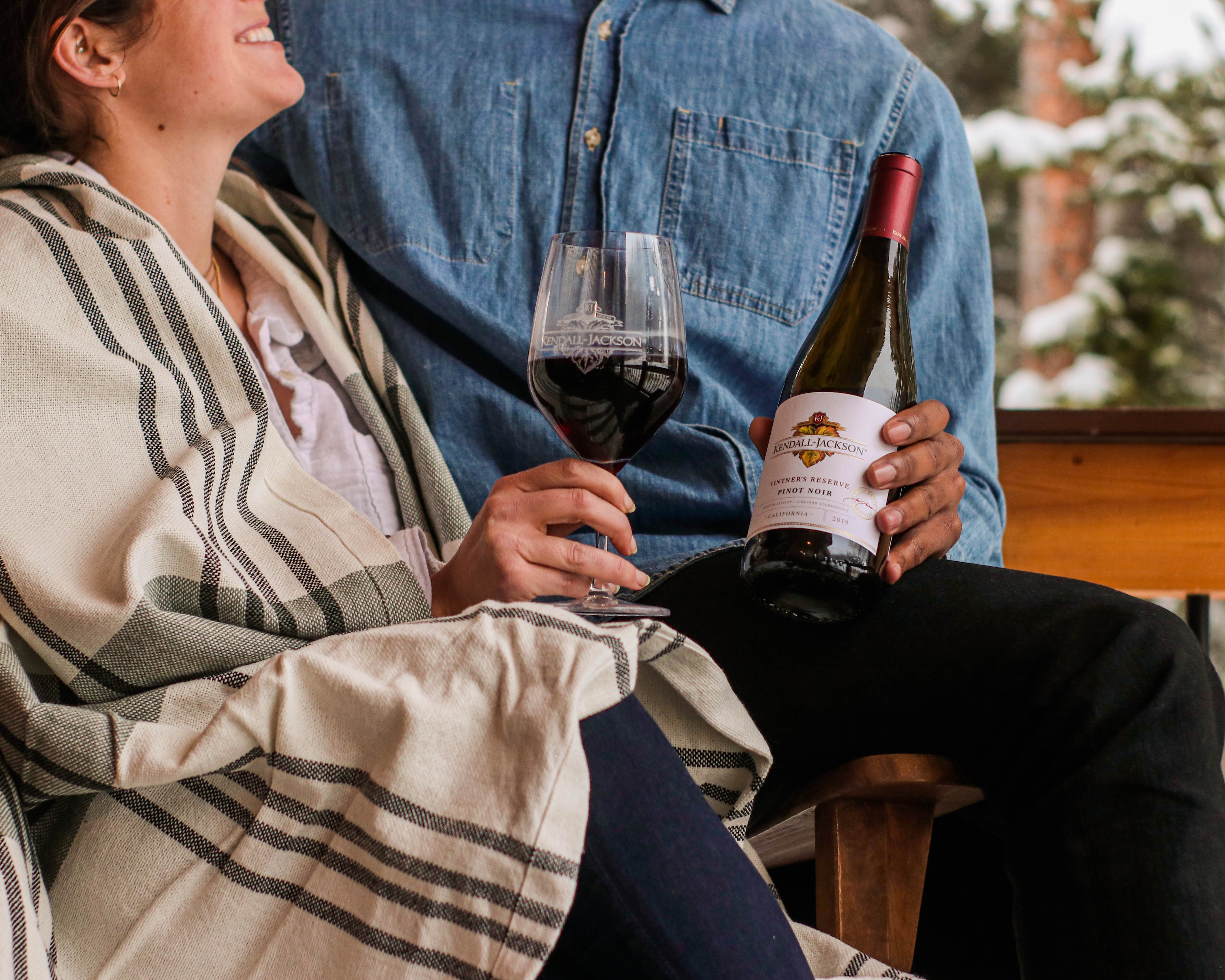The Difference Between Red and White Wine Glasses
Why obsess over red wine and white wine glass shapes?
Is there a difference between a paring knife and a chef’s knife? Why not substitute iceberg for arugula? Yes, the differences suggested may sound dramatic, but wine glasses can span such broad differences in spectrums, too.
That is because wine glasses change smell and taste. Aromas and flavors connect slightly differently to your perception diodes given the glassware.
Nonetheless, there are limits. When the differences are not so obvious or when convenience eclipses all, skip the formal stuff. Splash wine into any vessel!
Contemporary Wine Glass Use
Your grandmother only hosted with fine china and crystal in her dining room? Bless her. Did she fret about the different types of wine glasses? Likely no more than to make sure there was a glass for white and a glass for red. It’s entirely possibly that, by today’s standards, her glass choices wouldn’t have been considered ideal.
Today we operate on different parameters. We prefer bowl-shaped glasses not only for their beneficial aromatic effects but also because they allow us to more easily swirl the liquids inside them. While some wine glass shapes work well for both red and white wines, a more exacting nose or palate could easily find more precise alternatives to highlight a chosen wine.
Mind you, this isn’t so much a decision between a Toyota or a Tesla or a Ford Fiesta versus a Ferrari, with regard to price. Still, you absolutely have the option to spend copious quantities of money to refine offerings that are already highly precise when it comes to wine glasses. It doesn’t have to be that way though.
Understanding Wine Glass Shapes
The reason to consider your red wine glass shape, white wine glass shape, Pinot Noir glass shape, Chardonnay glass shape or Name-Your-Variety glass shape is that it changes how you perceive the wine – from its bouquet to its body and alcohol to its tannins and acidity. Lighter, more elegant grape varieties and wine styles tend to benefit from smaller glasses. Fuller-bodied and more powerfully flavored wines usually like to flex their power in larger wine glasses.
Of course, “larger” and “smaller” are relative. Many of those gorgeous, real estate-consuming red wine glasses you see on nice restaurant tables today can hold about a bottle of wine. Not every wine can live up to the “breathability” of those 20-plus ounce glasses.
Take solace in knowing that you can adopt what wine folks call a “universal” glass that should work well for most of your red and white wines. Visit Kendall-Jackson, and you’ll taste from a Bordeaux-style glass that fits that need.

So, what is a Bordeaux-style glass? The biggest of the two used at Kendall-Jackson is 8.75 inches tall and 3.25 inches in diameter. It holds 15.75 ounces, which is 62% of a bottle of wine were the glass filled to the brim! Of course, the glass should only be filled about one-third of the way, with about five ounces, which is a very sensible one-fifth of the bottle.
If, however, you want to be more precise in your wine glass shapes for red wines and white wines, options are certainly available. However, before you sprint down this rabbit hole, consider two final questions:
- Do you mind the chaos of multiple glass types in your cabinets? (If you have read this far, you’re likely to be okay with that.)
- Do you mind hand-washing (and drying - to prevent spots) your wine glasses? (If not, you can stick with the glass shapes below. You’ll just need to choose sturdier versions that are typically made of glass rather than crystal.)

Red Wine Glasses
Pinot Noir Glass
The glass style best-suited to Pinot Noir glasses is also one of the most distinctive wine glass shapes. Pinot Noir glasses have a broader bowl than “universal” glasses. The purpose of the shape is to allow the delicacy and complexity of the many smells of Pinot Noir to soar from the glass. The larger bowl allows a larger wine surface to oxygen ratio that helps Pinot Noir’s aromas expand in the glass then onto the palate. As Pinot Noir isn’t very tannic, it’s fine for the wider glass design to allow a broad delivery on the palate.
Cabernet Sauvignon Glass
A Bordeaux-shaped glass is precisely what you need for Cabernet Sauvignon since Cabernet is one of the predominant varieties in Bordeaux wines. The narrower shape of the glass should focus the entry on the palate to place the full-bodied and fairly tannic wine right onto the center of the palate, rather than spreading it across the palate like a Pinot Noir glass would (for a far less tannic grape variety.) One of the main ideas here is to try to contain the wine’s potentially mouth-drying tannins.
Zinfandel Glass
Zinfandel is a highly aromatic grape variety. As such, it needs a glass that focuses its nose, a bit like a white wine. Tannin-wise, Zinfandel can be either gracious or feisty, so choosing a glass that directs the liquid straight onto the mid-palate is the best bet. You often don’t know what you’ll get. Additionally, smaller bowled glasses tend to de-emphasis the frequently high alcohol one can sometimes sense from the wine’s nose.
White Wine Glasses
Chardonnay Glass
Chardonnay comes in all shapes and styles – discreet in fruit and highly minerally as well as boldly tropical in fruit with loads of toasty oak nuances. The former styles, similar to K-J AVANT, of Chardonnay tend to taste better from smaller white wine glasses. However, the latter styles, like Vintner’s Reserve Chardonnay, perform better in a glass with a larger bowl, rather like Pinot Noir. In fact, this is true for any white wine aged in oak. The more wine-to-air surface contact the better as the air will help the wine’s fruit characters edge forward in the face of its oaky tones.
Riesling Glass
Riesling is grape variety bountiful in aromatic expression. Its exuberance can be hard to contain, so it is best to serve it in smaller glasses because they focus the wine’s bouquet. Unlike Pinot Noir, which benefits from a larger oxygen to wine surface ratio that allows the grape’s aromas to expand, Riesling’s floral delicacy (especially that of young Riesling) can simply become “lost” in a large glass.
Other Wine Glasses
Sparkling Wine Glasses
Sparkling wine glasses come in two traditional shapes: flutes that emphasize streams of bubbles but do little for aromatic expression or coupes that look cool but do nothing else. However, more recently, sparkling wine glasses that widen just below the rim then curve back in have become easier to find. This style of glass helps emphasize the more vinous notes of the bubbly. If you really want to drink sparkling wine like a wine rather than a bubbly, serve it in a small white wine glass.
Sweet Wine Glasses
Speaking of small white wine glasses, they can make do in a pinch for sweet wines. However, sweet wines are served in such small portions – usually only two or three ounces - that they do benefit from smaller glasses. Because sweet wines are all about exuberant aromatics, straight-sided glasses – like with Riesling or Zinfandel - are preferable. However, be sure your sweet wine glasses still allow your wine to “breathe”. It’s not uncommon to see tiny glasses filled to the top, especially for fortified wines. That’s a shame as all of those aromas are releasing straight into the stratosphere rather than concentrating by bouncing off the sides of the glass. Sweet wines are usually more expensive ounce-for-ounce than still wines, so don’t cheat yourself of the treat!
Sure, you could use a swirly straw to siphon your wine out of the bottle. However, it doesn’t have to be hard - nor does it have to be expensive - to gather a set of proper wine glasses. You can keep things simple with a universal glass or cautiously expand to cover a series of wine styles with just a few shapes. But if you have the shelf space and want to geek out, your options can expand far beyond the wine glass shapes covered in this piece!
For more wine serving tips, visit the Entertaining section of our website.
Christy Canterbury is a Master of Wine, journalist, speaker and judge based in New York City. In 2014, she was short-listed for the Roederer Online Wine Communicator of the Year Award. Her work has been published in Decanter, Wine Enthusiast, Edible Green Mountains, Wine Searcher, Food Arts, Snooth, Beverage Media, TimAtkin.com, Civiltà del Bere, Wine Business Monthly, TASTED, Selectus Wines and in other outlets.



